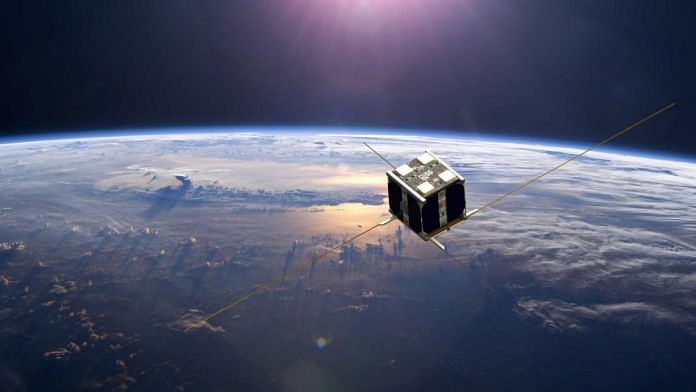The inflection point for the Indian space sector is a concurrent one, driven largely by rapid advancements in democratising the commercial space market. With the unveiling of the Indian National Space Promotion and Authorisation Centre or IN-SPACe’s Decadal Vision and Strategy, India has set itself an ambitious yet achievable goal: raising its share of the global space market by 2033 to $44 billion, at a projected 16 per cent CAGR.
Debates and deliberations on this roadmap will continue to occupy centre stage as India strides towards a Vikshit Bharat across all spheres. This vision entails an investment prospect of $22 billion over the next decade, with its realisation hinging on one of the most transformative verticals in space technology — Satellite Communication (SATCOM).
The SATCOM vertical is expected to contribute approximately $14.9 billion by 2033, with $12.7 billion projected from the domestic market and $2.2 billion from exports. To achieve this milestone, it is essential that the 10-year vision is broken into realistic annual targets, backed by actionable plans and a conducive ecosystem for industry growth.
First, we have to understand that SATCOM is not a nascent industry in India. It is mature and highly promising, but its relevance is shaped by rapid technological innovations — be it the advent of high-throughput satellites, upcoming Low Earth Orbit (LEO) constellations, or the promise of affordable, high-capacity broadband from space. These shifts are redefining market dynamics and demand in ways that could significantly accelerate India’s role in the global space economy.
Also read: A Hyderabad startup is launching India’s 1st ‘thinking’ satellite. A brain in space
India’s SATCOM demand
A realistic assessment of India’s SATCOM demand has already been undertaken by IN-SPACe in collaboration with user ministries and departments, alongside a detailed capacity-supply analysis across services. These assessments provide not only a sound starting point for strengthening India’s SATCOM sector but also a rationale for allowing the use of non-Indian satellite capacity.
The reliance on foreign capacity is stark. Nearly 65-70 per cent of India’s 900 TV channels depend on non-Indian C-band transponders; three of the four private DTH operators use non-Indian satellites; and over half of the 2.5 lakh VSATs (Very Small Aperture Terminals) deployed in India operate on foreign capacity. This dependence, sustained for over three decades, shows the urgent need for a turnaround. The challenge now is to create a balanced ecosystem where both domestic and global operators contribute to a stable and competitive market.
In this direction, an inter-ministerial Joint Working Group was constituted in August to devise strategies for generating SATCOM market demand. Earlier, the Standing Committee for Inter-Ministerial Coordination (SC-IMC) had adopted a balanced approach to authorising non-Indian satellite capacity, including permitting Plan Band usage, marking a significant step toward streamlining processes. With these regulatory foundations in place, the principle of “availability of Indian satellite capacity vis-à-vis national demand” can be effectively implemented. The new Joint Working Group will help bring constructive reforms.
Using resources prudently
At the heart of SATCOM growth lies the judicious management of orbital and spectrum resources—both finite and indispensable. At IN-SPACe, we attempt to ensure interference-free operations, regulatory compliance, and optimal utilisation of India’s orbital assets. Mechanisms such as allowing NGEs (Non-Government Entities) to leverage unused ISRO ITU filings for high-throughput satellites, and promoting ground infrastructure through models like Ground Station-as-a-Service (GSaaS), are at the core of IN-SPACe’s role to safeguarding national orbital resources while building a resilient, globally competitive SATCOM ecosystem.
At the same time, SATCOM must be positioned not merely as a commercial enterprise but as a critical enabler of inclusive growth and national resilience. From connecting unserved and underserved regions, to complementing terrestrial broadband for Digital India, to serving as the only reliable communication lifeline in disaster-hit areas — SATCOM’s socio-economic impact goes far beyond revenue figures.
If India is to realise its $44 billion space economy ambition by 2033, SATCOM must be at its core. This will require targeted investments, demand-driven regulatory frameworks, and above all, a clear roadmap that transforms today’s dependency into tomorrow’s capability.
Prafulla Kumar Jain is Director, PMAD (Program Management and Authorization Directorate), IN-SPACe, Department of Space, Government of India. Views are personal.
(Edited by Prashant)






